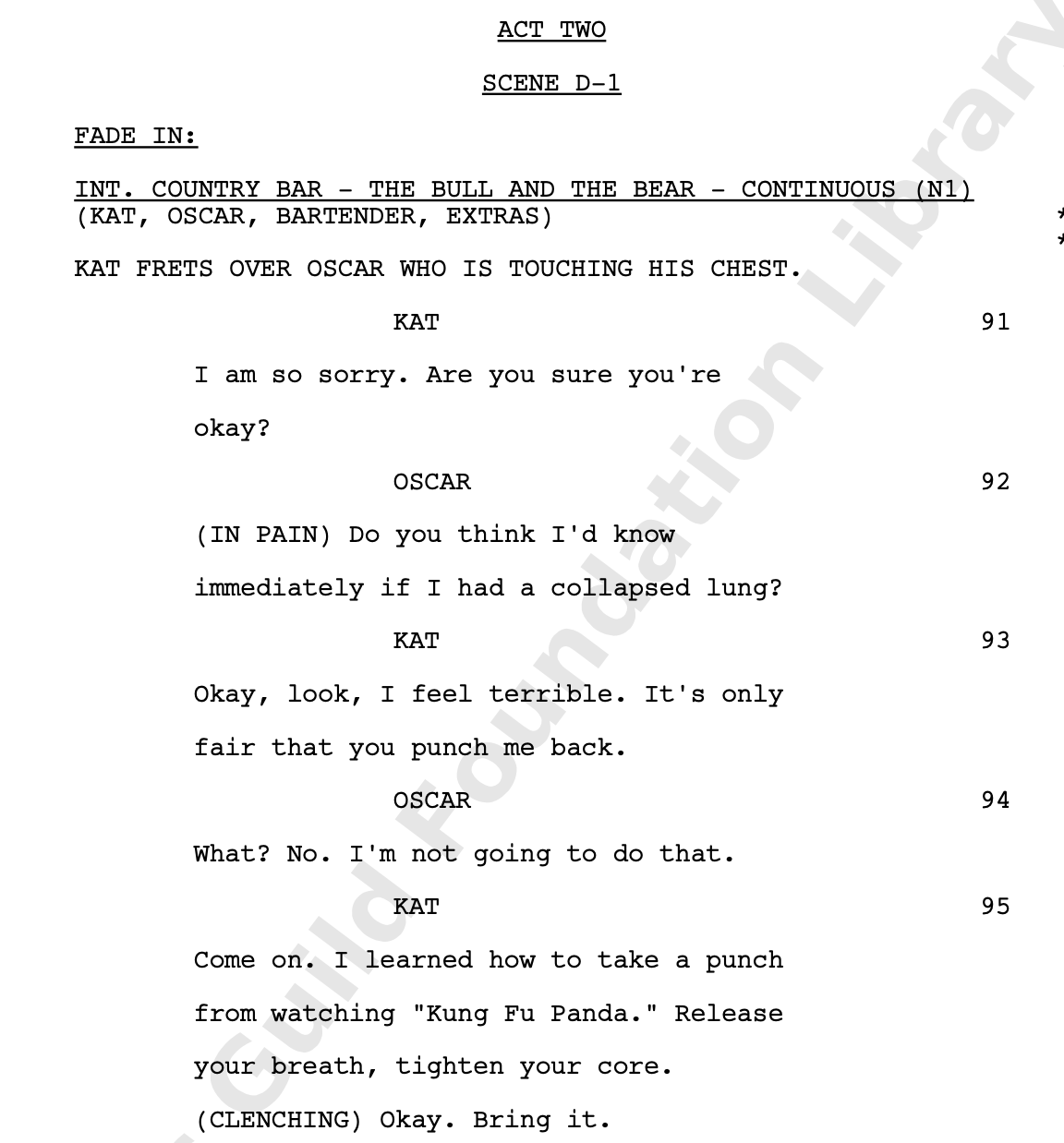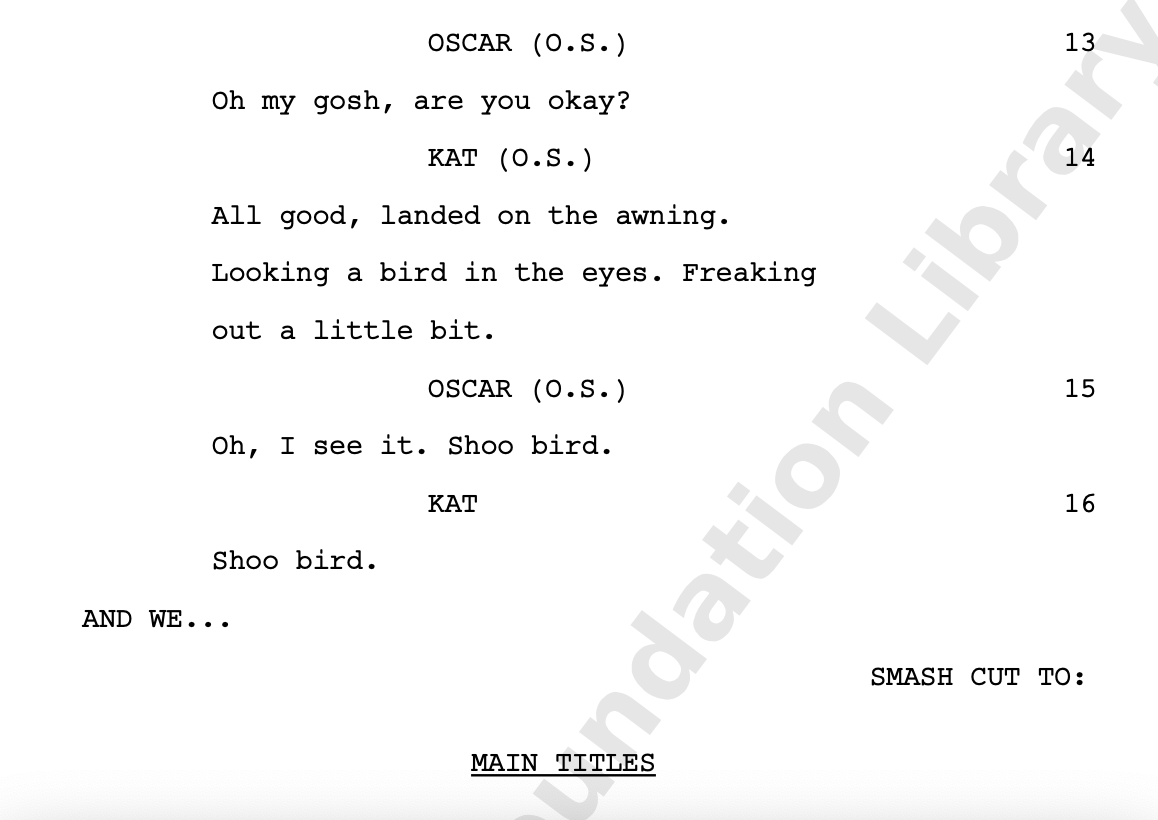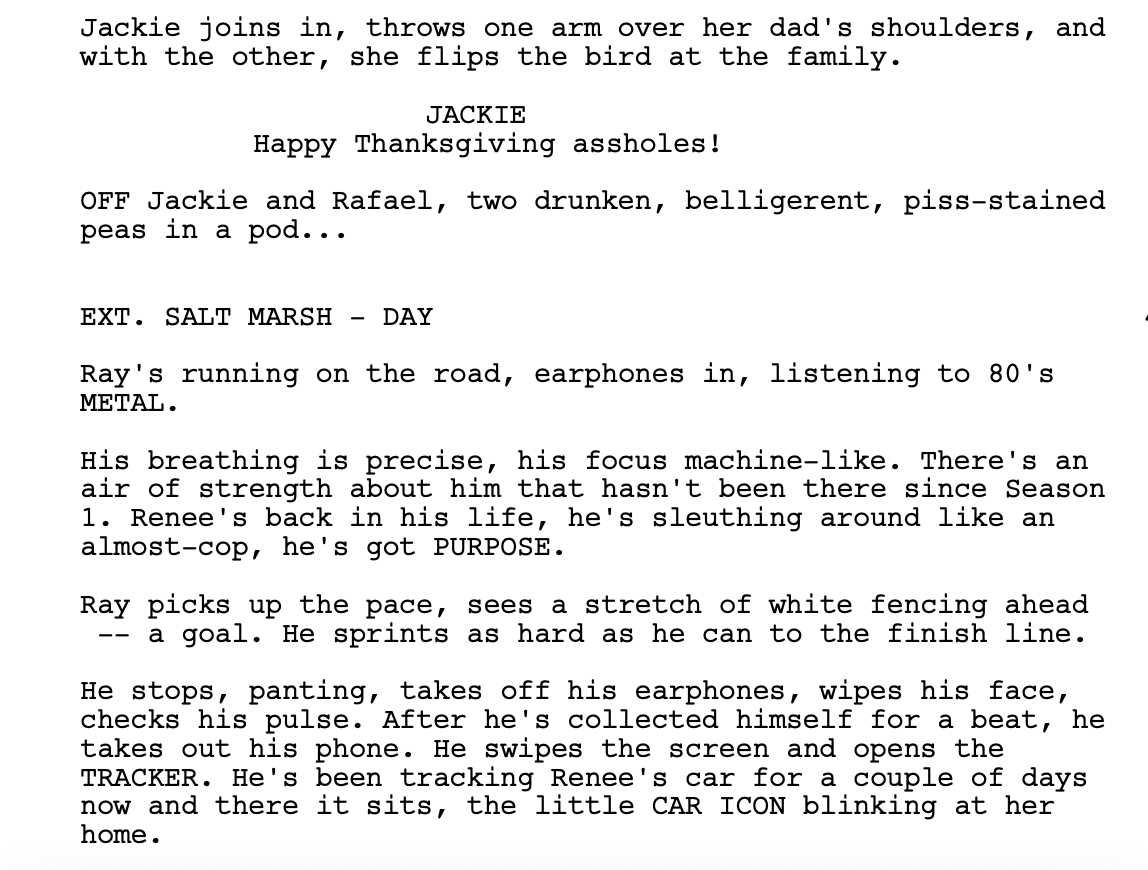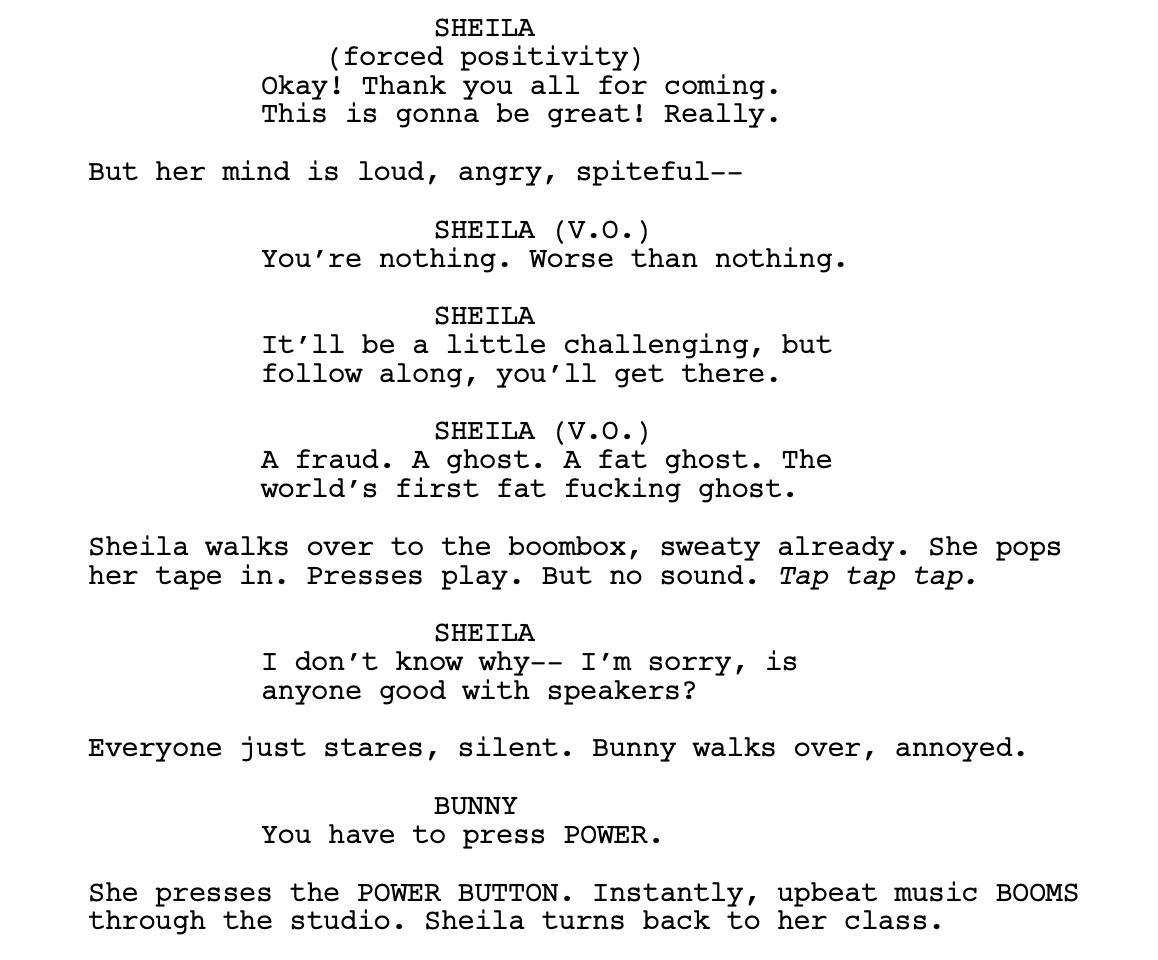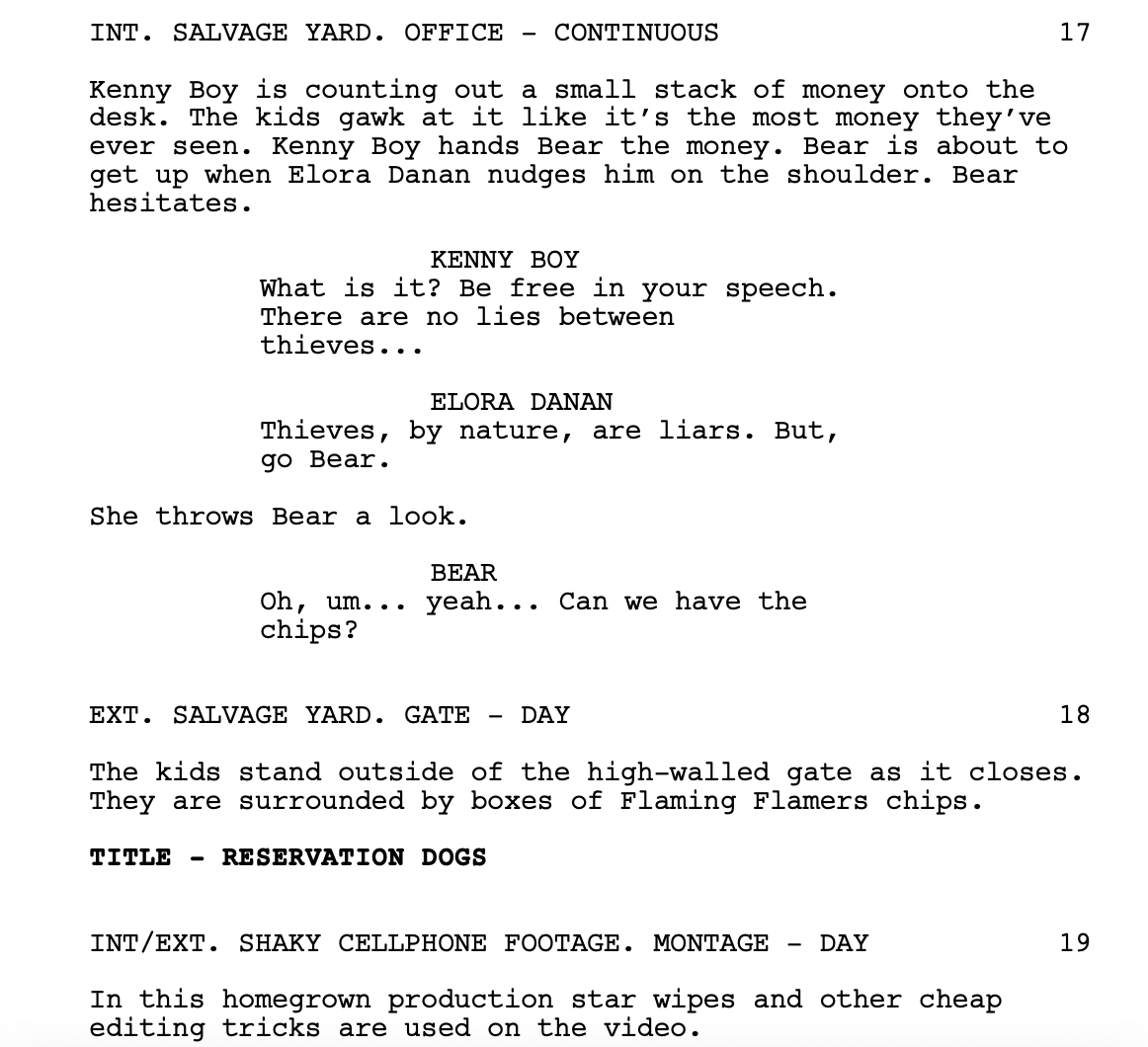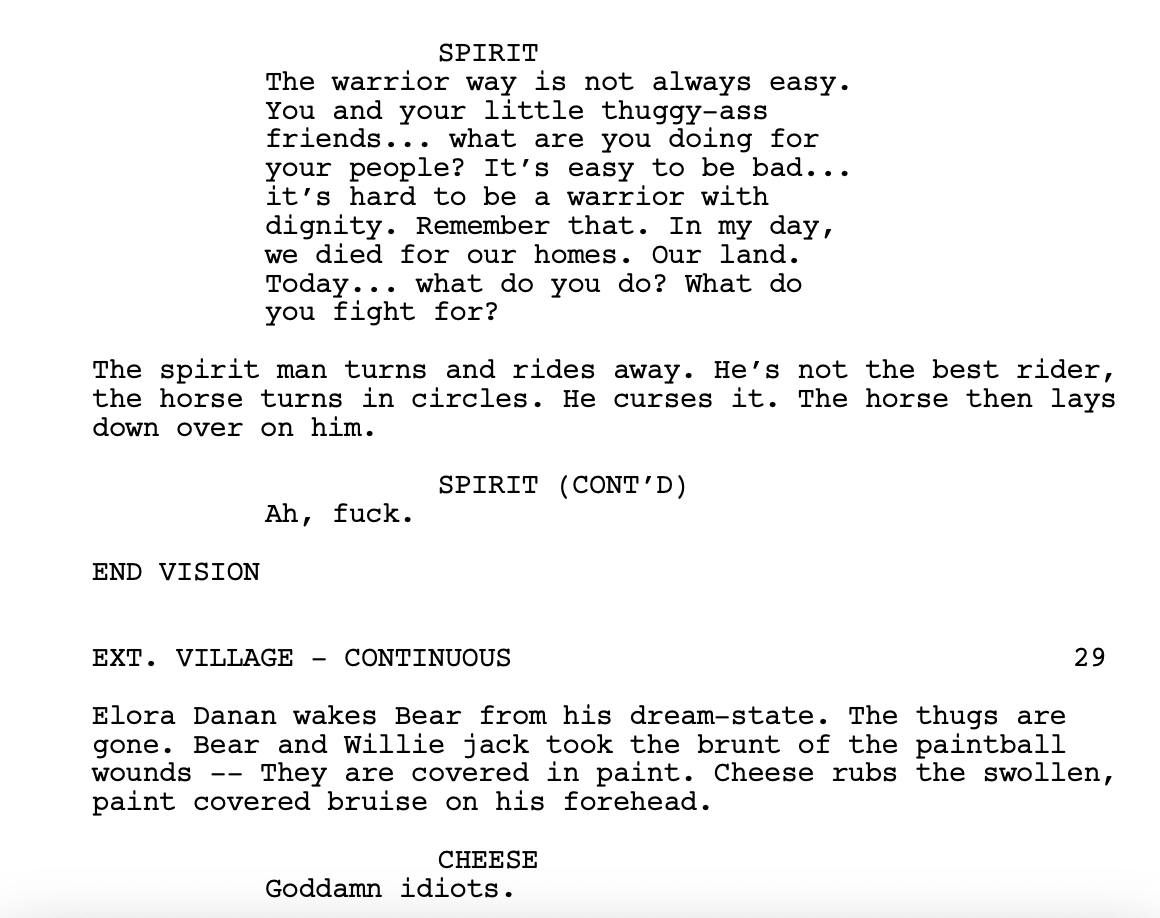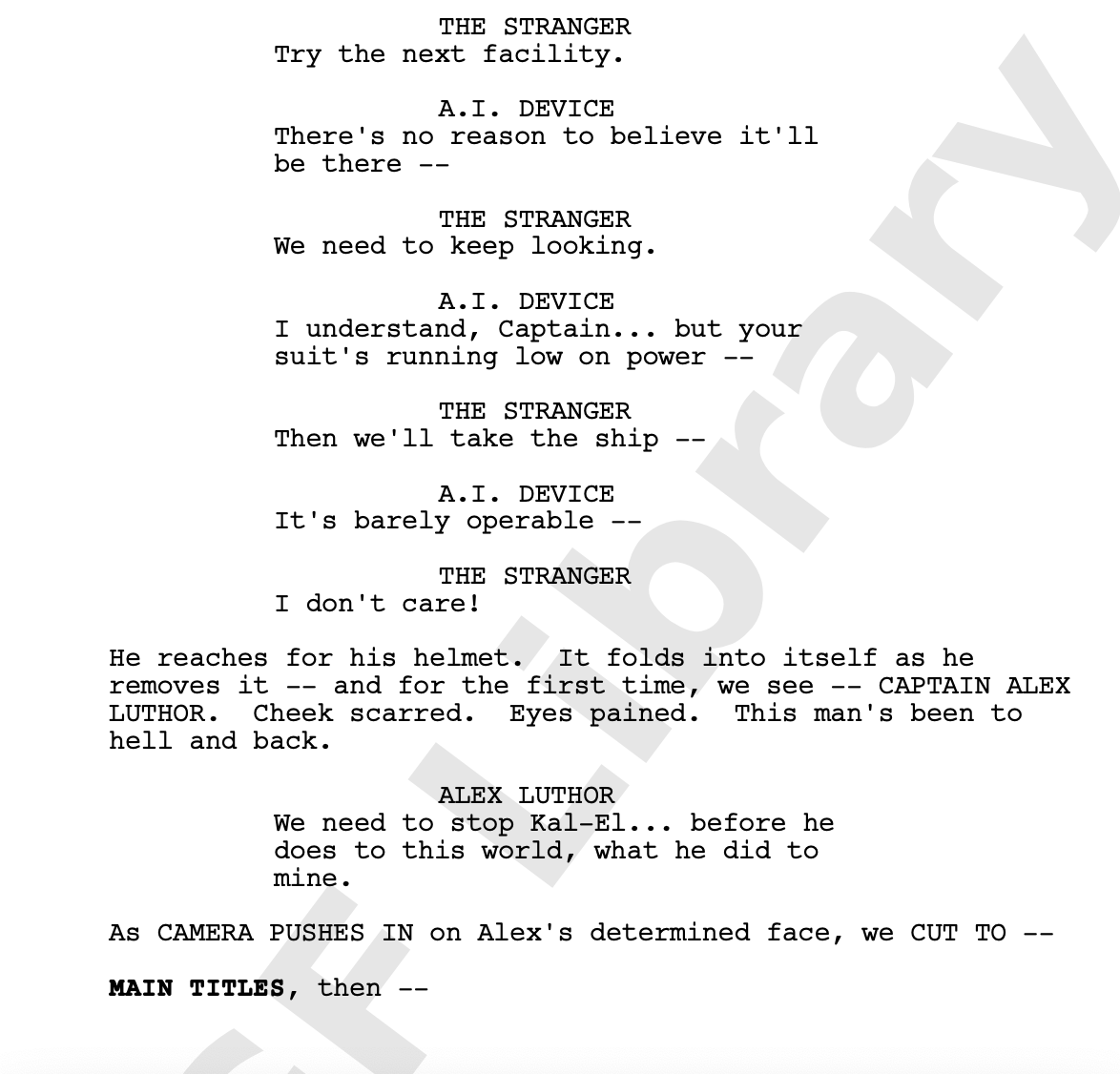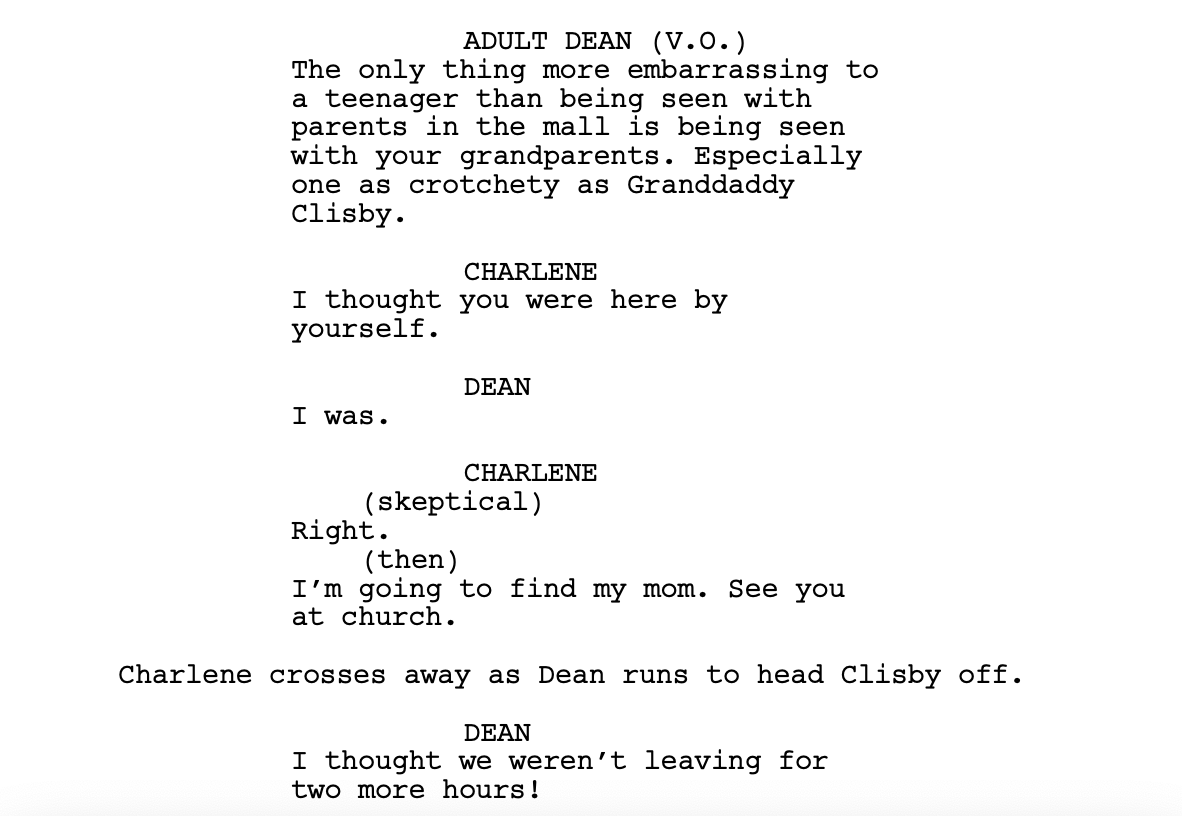FORMATTING YOUR SPEC SCRIPT, A PRIMER - PART 20
With Fellowship Season ‘22 upon us, here is another post in what has become a mainstay series for the WGF Library: our TV Spec Script Formatting Primers.
If you’re applying to a fellowship or taking a TV writing class or just trying to learn the mechanics of TV writing as you build your portfolio, we likely have scripts you want to look at in the library for your research—scripts that you can’t find anywhere else. You might be frustrated you can’t come in and look at them.
If you feel stymied by our in-person closure (or live outside LA), this blog series is for you. These primers are meant to supply the notes you’d take if you came to read scripts in-person.
As always, we aren’t able to send out scripts in full as we are not the copyright holders, but we hope this primer jump-starts your research and writing. If you have further, more specific questions about the shows covered in this (or any other) formatting post, please e-mail us at library@wgfoundation.org and we can help clarify or provide more info.
CALL ME KAT (Fox)
Average page count: 42-45
Average scene count:
Broken in to acts? Yes, a cold open + four acts
Other things to consider:
Call Me Kat is a multi-cam sitcom. The scripts use traditional multi-cam formatting. This means that all description is in CAPITAL letters, all dialogue is double-spaced and new scenes are lettered rather than numbered, e.g. - “SCENE B” is centered, bolded and underlined at the beginning of a new scene.
Underneath each scene heading is a parenthetical which lists the characters in the scene in ALL-CAPS.
At the beginning of season 1, Call Me Kat scripts consisted of a cold open, three acts and a tag, but the formatting evolved to a cold open and four acts. The cold open is typically 4 to 4.5 pages. Act one is 8-15 pages. Act two is 10-19 pages. Act three is 7-14 pages. Act four is 5-6 pages. Keep in mind, this is just a range to give you an idea. Your acts might be a little shorter or longer.
Act breaks are formatted ACT ONE / END OF ACT ONE, centered and underlined.
Act four (the last act) ends END OF SHOW, centered and underlined.
The end of every act and the end of the episode is typically preceded with a “FADE OUT.” in ALL CAPS on the right-hand side. The show often utilizes transitions between scenes. Think: “POP TO:” or “CUT TO:” in all caps on the right-hand side.
The cold open ends with: MAIN TITLES centered and underlined (as opposed to END OF COLD OPEN).
Like many multi-cam sitcoms, Call Me Kat notes sounds effects in BOLD on the left hand side, e.g.: SFX: DOORBELL RINGS
HIGHTOWN (Starz)
Average page count: 53-58
Average scene count: 44-45
Broken into acts? No
Other things to consider:
On the page, these scripts feel much like little feature screenplays.
The description is easy-going, casual, profane… fun to read.
The writers CAPITALIZE significant props, visuals, sounds… This might not be supremely important in a spec script, but it helps in production — and is a good practice to get into if you want to write TV.
Scripts end with THE END – centered, underlined and sometimes bolded.
PHYSICAL (AppleTV+)
Average page count: 32-36
Average scene count: 28-41
Broken into acts? No
Other things to consider:
Scene headings are underlined.
Physical utilizes lots of voiceover on the show. Sometimes Sheila will have voice-over after saying a line of dialogue. In this case, the voice-over is given a separate dialogue line. The voice-over often presents Sheila’s self-disgust and her disgust with people and things surrounding her.
The tone is very wry and witty.
Lines of description are often preceded by dashes or ellipses to give everything a fluid, fast-cutting feel.
Again, it’s good practice to CAPITALIZE significant props and actions. Physical does this.
Episodes end with END OF EPISODE, centered, bolded and underlined.
RESERVATION DOGS (FX)
**As it’s the only episode we have in the library, the stats presented here are from the pilot script.
Page count: 36 (subsequent episodes are probably a little shorter)
Scene count: 48 (but it likely fluctuates depending on the episode)
Broken into acts? No
Other things to consider:
The pilot script is not broken into acts, but it does have a main title cue. It occurs on page 8 and is formatted: TITLE CARD: RESERVATION DOGS in bold on the left side of the page.
If you wanted to give a nod to the pilot in your spec, start the script with “FADE IN:” at the top on the right-hand side.
Character descriptions are usually done with a parenthetical and are concise and funny.
The pilot script formats its scene headings with a period after the main location rather than a dash, e.g. – “EXT. SALVAGE YARD. GATE – DAY” or “INT. BEAR’S HOUSE. BEDROOM – DAY” as opposed to “INT. BEAR’S HOUSE – BEDROOM – DAY”
Montages or quick shots are noted with a single dash before the line of description.
If Bear has an encounter with William Knife Man, the spirit, it’s noted in the scene heading, e.g. “EXT. VILLAGE. VISION SEQUENCE – DAY.” William Knife Man is simply referred to as “Spirit” in the pilot dialogue. See show creator Sterlin Harjo talk about this first vision sequence here.
The pilot episode ends without a formal “THE END” or “END OF EPISODE.” It’s formatted more like a feature script.
SUPERMAN & LOIS (The CW)
Average page count: 48-49
Average scene count: somewhere in the range of 50-100
Broken into acts? Yes, six
Other things to consider:
Like most CW shows, Superman & Lois is broken into six acts. Act one is typically the longest, clocking in at 9-13 pages. Act two is around 9 pages. Act three is 6-8. Act four 5-6. Act five 5-6. Act six is 6-9. Again, this averages are not completely set in stone. The most important thing to note is that the acts get shorter as the episode progresses and picks up the pace near its conclusion.
Somewhere within the first 5 pages of each script is a title cue. This is written right into the description like “we cut to titles” or “we cut to main titles…” The word TITLES or MAIN TITLES is capitalized and bolded.
The scripts use onomatopoeia in their action description: BOOM!, FLASH!, CRASH! It’s a Superman story after all…
Act breaks are formatted: ACT ONE / END OF ACT ONE, centered, bolded and underlined.
At the end of act six: END OF EPISODE, centered, bolded and underlined.
Flashbacks are note in the scene heading, e.g. – “EXT. BADLANDS – DAY – FLASHBACK” (and the world FLASHBACK is in bold. Then all text that is a part of the flashback scene is in italics.
THE WONDER YEARS (ABC)
Average page count: 26-31
Average scene count: 18-32
Broken into acts? Yes, a cold open + three acts
Other things to consider:
A staple of The Wonder Years is the main character Dean's voice-over as an adult. This voice over is written "ADULT DEAN (V.O.)" When Dean is a kid, it's just DEAN.
The scripts are broken into three acts and a cold open. The cold open is 2-6 pages. Acts one, two and three are in the 6-12 page range.... 9 is about average. Keep in mind the third act is usually a little shorter (think 5-6 pages).
The act breaks are formatted: ACT ONE centered and underlined / END OF ACT ONE centered/bolded and underlined.
The end of the third act is formatted: END OF SHOW (or END OF EPISODE), centered, bolded, underlined.
Music cues are a huge part of the show. These are formatted: MUSIC CUE: "Try a Little Tenderness" by Otis Redding in bold. The words MUSIC CUE are in ALL-CAPS. See show creator Saladin K. Patterson discuss writing music cues on The Wonder Years here.
Flashbacks are simply noted at the end of a scene heading, e.g.: "EXT. WILLIAMS HOUSE - CAR PORT - NIGHT - FLASHBACK"
Text on screen is noted with a CHYRON.
Until next time, happy writing!

